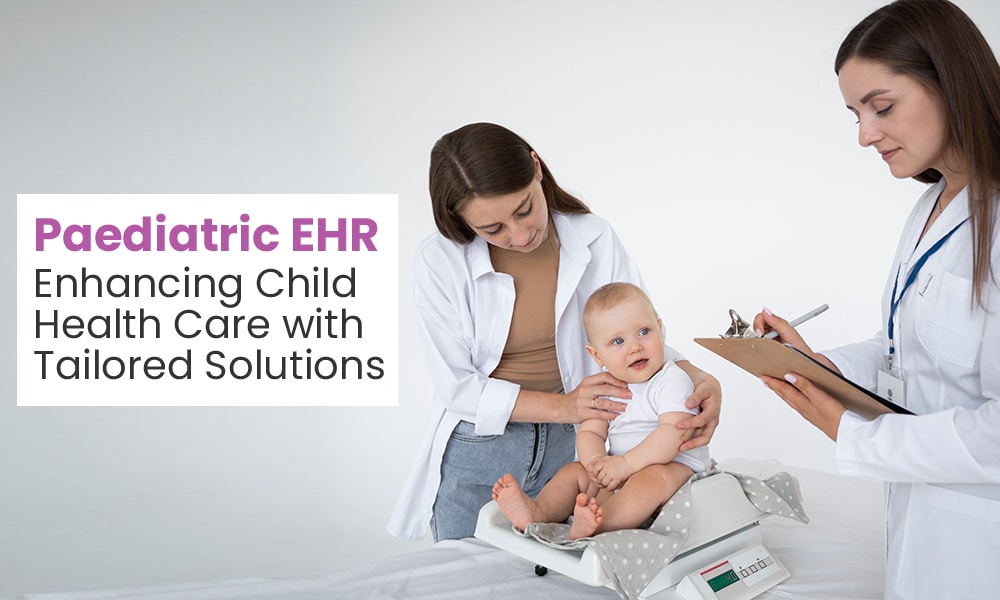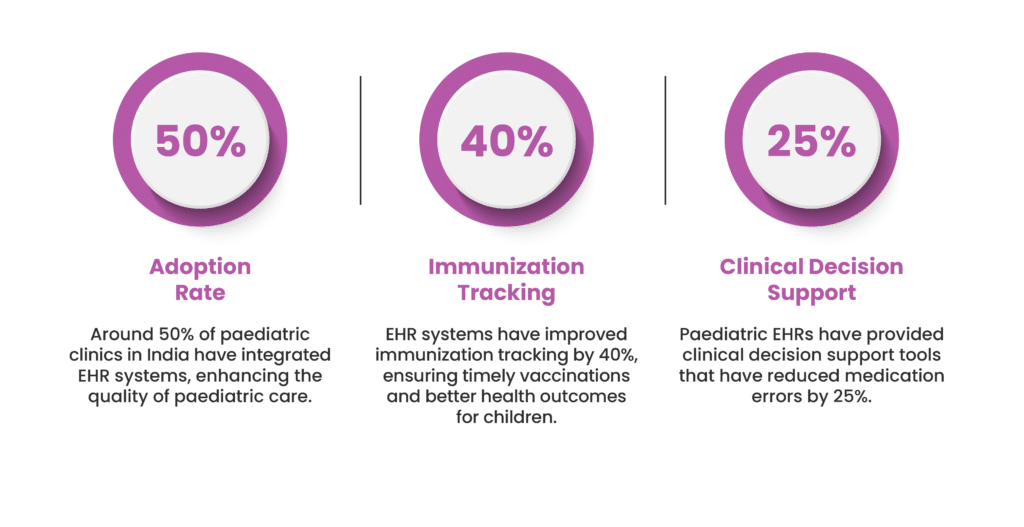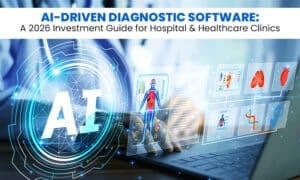
Managing Paediatric healthcare requires a specialized approach to cater to children’s unique needs, from newborns to adolescents. A Paediatric Electronic Health Record (EHR) system plays a vital role in ensuring quality care by organizing patient data and offering features that meet Paediatric needs. With tools tailored for young patients, a well-designed Paediatric EHR can simplify patient management, improve diagnostics, and streamline workflows, making it easier for healthcare providers to deliver optimal care.
Key Features of Paediatric EHR
1. Growth Tracking and Developmental Charts
Paediatric EHRs include tools to monitor growth and development, like WHO growth charts and BMI percentiles. These charts allow doctors to assess if a child’s growth aligns with age-specific standards, aiding in the early detection of health concerns. Regular tracking also provides valuable insights into overall health, enabling providers to make informed treatment decisions.
- Length/Height-for-Age
The chart provided by WHO indicates the growth patterns of children from birth to 5 years, helping to assess stunting or excessive height for age. It serves as a crucial tool for identifying potential nutritional or health issues.
- Weight-for-Age
This chart, suggested by WHO, illustrates a child’s weight in relation to their age. It is essential for assessing underweight or overweight conditions, guiding healthcare providers in recognizing potential malnutrition or obesity risks.
- Weight-for-Length/Height
The WHO chart for weight-for-length/height evaluates the weight of children relative to their length or height, particularly useful for infants and toddlers. It aids in identifying wasting or overweight conditions, providing insights into a child’s nutritional status.
- Body Mass Index (BMI)-for-Age
WHO’s BMI-for-age chart tracks BMI as children grow, offering a standardized method to assess body composition. It helps identify potential weight-related health issues, guiding interventions for maintaining a healthy weight.
- Head Circumference-for-Age
This chart, suggested by WHO, monitors head circumference growth, which is vital for assessing brain development in infants and young children. Abnormal measurements can indicate potential health concerns that may require further investigation.
To know more about the WHO Growth Charts refer to the sites-
Child growth standards , WHO Growth Charts
2. Vaccination Management
Ensuring that vaccinations are on schedule is essential in Paediatric. Paediatric EHRs have vaccination tracking and automated reminders for upcoming immunizations, reducing the chances of missed vaccines. This feature is particularly valuable for parents, helping them stay on top of vaccination schedules and contributing to community health.
3. User Friendly Interface
Many Paediatric EHRs have a simplified interface designed to make children comfortable during appointments. These child-friendly interfaces include colourful visuals and easy-to-understand graphics, which helps calm young patients and makes visits less intimidating, improving the overall patient experience.
4. Parental Access and Proxy Accounts
Paediatric EHRs often allow parents or guardians to access the child’s records, offering a proxy account feature. Parents can view the child’s health information, book appointments, and receive reminders, ensuring they stay well-informed and engaged in their child’s care journey.
Benefits of Using Paediatric EHR
1. Enhanced Accuracy in Diagnosing Paediatric Conditions
With tools like growth tracking, developmental milestones, and access to historical health data, Paediatric EHRs enable doctors to make more accurate diagnoses. This accuracy is critical in Paediatric, as early detection of developmental or genetic issues can significantly improve outcomes.
2. Improved Parental Engagement and Education
Paediatric EHRs offer educational resources for parents, providing insights into their child’s health and lifestyle recommendations. Parents can access these resources through the EHR, keeping them informed about preventive care, which boosts patient engagement and enables informed decision-making.
3. Efficient Management of Chronic Conditions
For children with chronic conditions like asthma, diabetes, or allergies, a Paediatric EHR system streamlines ongoing management. These systems track medications, symptoms, and treatment plans, allowing for proactive management. This organization ensures children receive the right care at the right time, with fewer disruptions.
4. Time Efficiency and Better Workflow for Providers
Paediatric EHRs reduce administrative work by automating routine tasks such as data entry, appointment scheduling, and billing. This time-saving benefit allows providers to focus on patient interaction, leading to more personalized care and improved clinic efficiency.

Future Perspective of Paediatric EHR
Technological Advancements in Paediatric Care
Advancements in AI, machine learning, and data analytics will enable Paediatric EHRs to predict health trends, like potential allergies or growth anomalies, using patient history. This predictive ability can help doctors make proactive, data-driven decisions.
Enhanced Integration with Diagnostic Tools
The future of Paediatric EHRs will see integration with new diagnostic tools, allowing for more precise monitoring of Paediatric health. Seamless integration with telehealth and wearable devices could enable real-time health tracking, further enriching the EHR system.
Support for Personalized Medicine
Paediatric EHRs will evolve to support personalized treatment plans based on genetics, family history, and lifestyle, creating individualized care paths that enhance long-term health outcomes.
Conclusion
A Paediatric EHR is invaluable for managing children’s healthcare by providing features that streamline workflows and enable data-driven decision-making. Its specialized tools, from growth tracking to vaccination reminders, create a robust foundation for Paediatric care. As technology advances, Paediatric EHR systems will continue to evolve, further supporting personalized care and optimizing outcomes for young patients.





